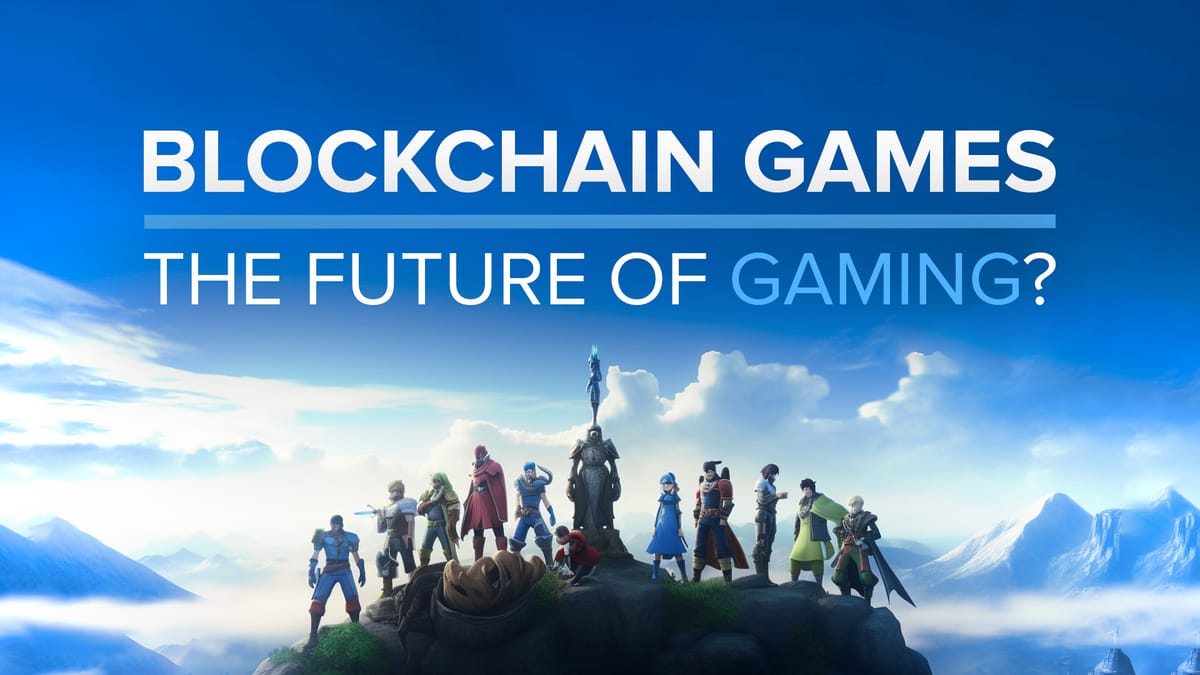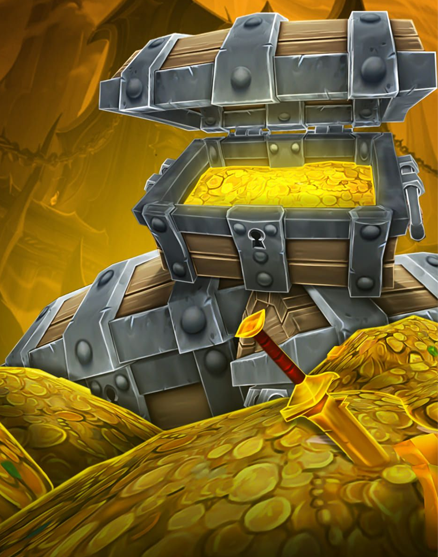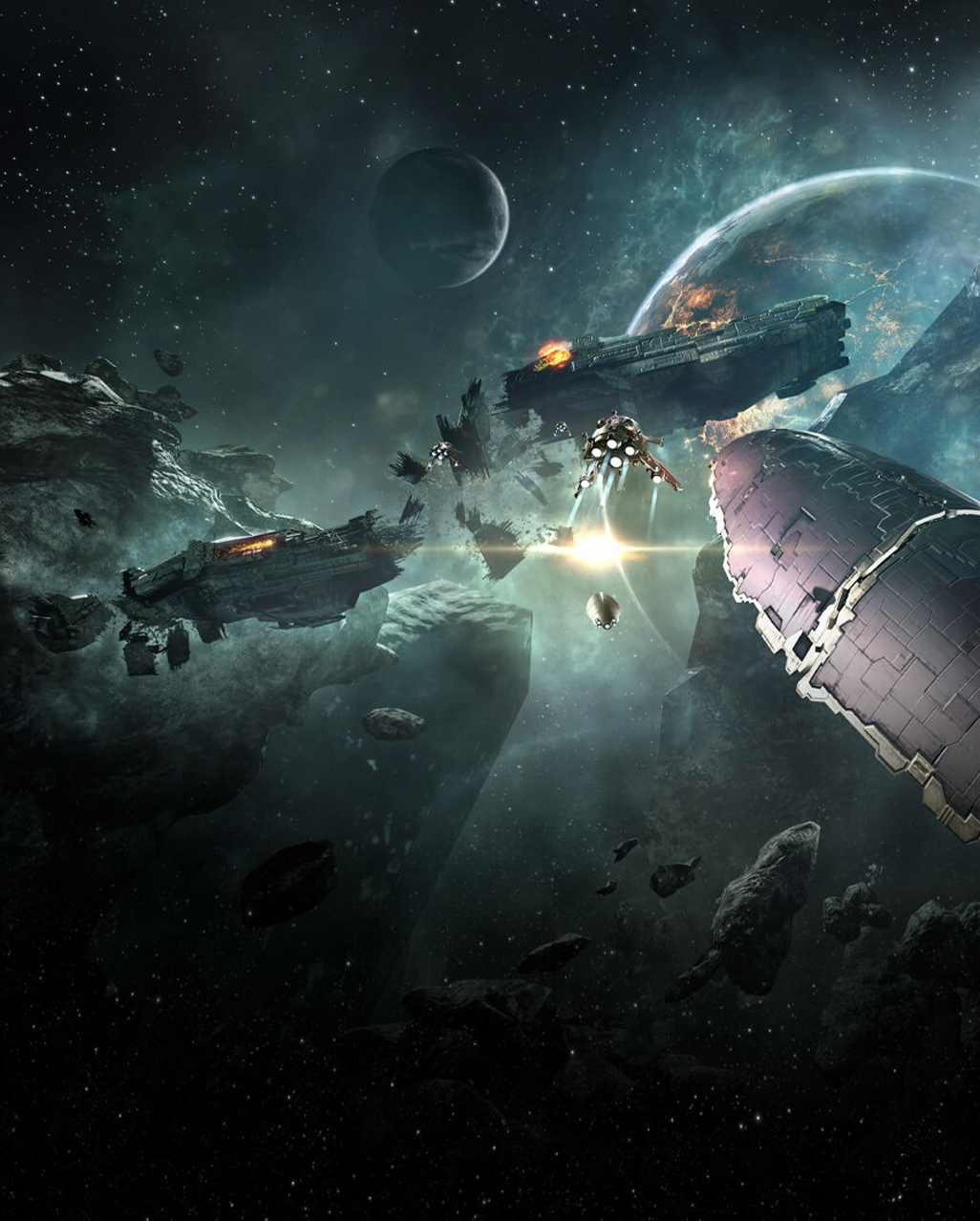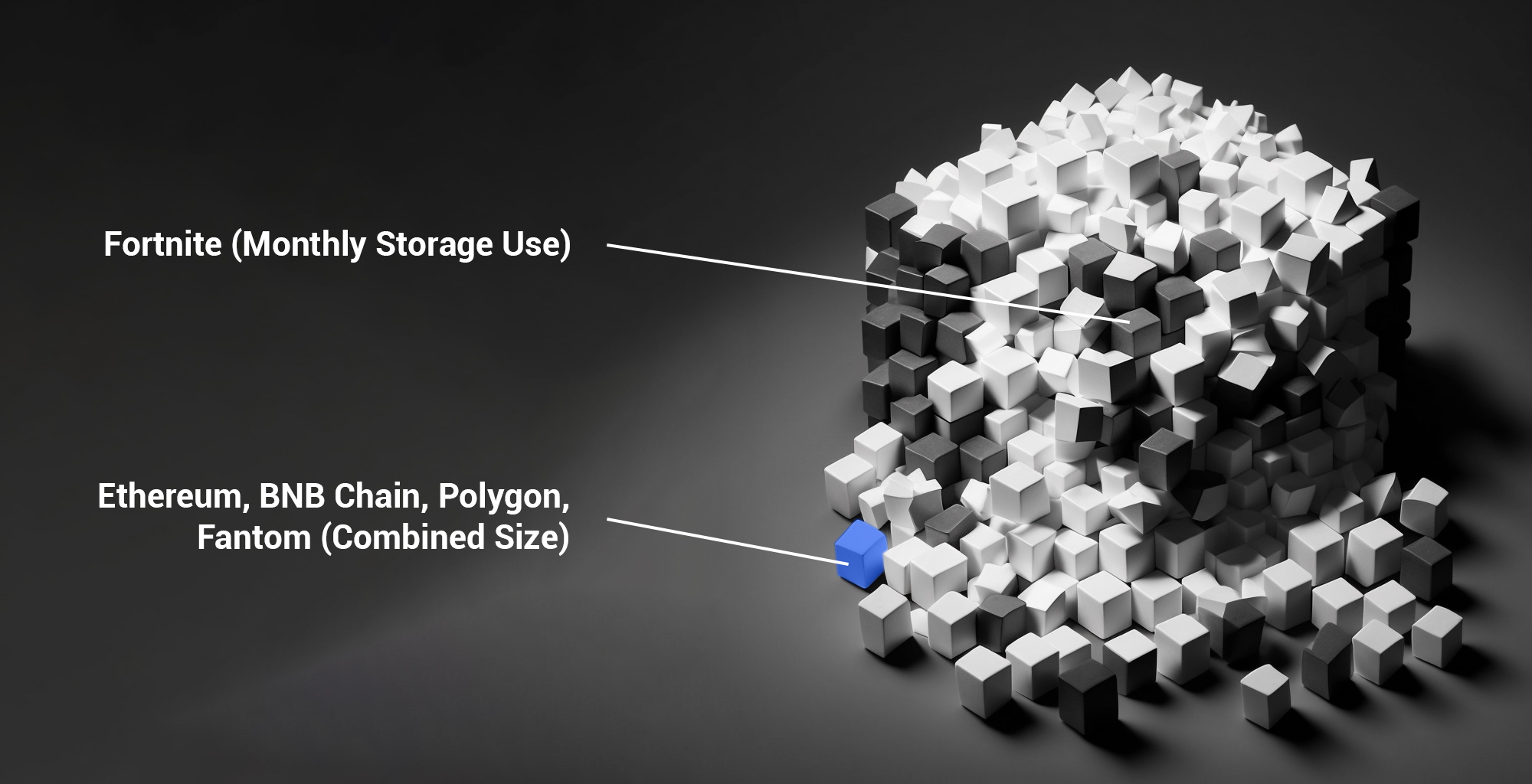Are Blockchain Games the Future of Gaming?

Blockchain games have emerged as a major trend and often are touted as a powerful means of driving adoption. Play-to-earn projects have received substantial valuation and funding, with many investors believing that they represent the future of gaming.
Are blockchain games really the future of gaming, or are they merely a passing trend? Let's take a closer look.
What are blockchain games and GameFi?
Blockchain games and GameFi are two terms used interchangeably, yet they are quite different.
GameFi, a term that combines "game" and "finance," refers to games that incentivize players with decentralized economic rewards, also known as play-to-earn games. On the other hand, blockchain games refer more generally to all games that incorporate blockchain technology into their infrastructure, such as utilizing NFTs for in-game items to give players true ownership of their assets.

I believe the future of blockchain and gaming should revolve mainly around blockchain games, and not play-to-earn games, as there is an inherent flaw with GameFi.
The fatal flaw of GameFi
Play-to-earn games have gained popularity due to their promise of generating money for players. However, their sustainability depends on whether they can provide a compelling gaming experience beyond financial incentives. If players play solely to earn money and neglect the gameplay, who will sustain the game when there is no economic incentive to play?
Traditional games already have allowed players to earn real-life money, such as gold farming in World of Warcraft. Scientific American published an article back in 2010 examining earning real money from games in which they stated:
“In just a few years gold farming has become a vast enterprise. A best estimate suggests that Asia, and particularly China, where most of the gold farmers reside, employs more than 400,000 players who spend their days stocking up on gold.
Total annual trade in virtual gold probably amounts to at least $1 billion. Perhaps as many as 10 million players worldwide buy gold or services from farmers that help them advance in the game.”
How do these games stay successful while players are able to earn money from them? Well, they thrive because they offer a fun and immersive experience that attracts millions of players regardless of financial gain.

These games have created an environment in which spending time is enjoyable and rewarding — but not financially rewarding. They mimic time spent in the real world with friends. We play them to have fun and create memorable moments, to compete and come out on top, and to destress after the real world takes its toll.
As part of this gaming experience, there are players who are willing to spend money to advance quicker than others by buying in-game assets with real money. This has created a market for virtual goods, which is mostly serviced by a small group of players who have the skills, time, and resources to accumulate and sell these assets for real money; this group is a tiny minority within the larger player base, the majority of whom don’t earn money by playing.
There are countless more examples of traditional games with which players earn money actively, including RuneScape, EVE Online, Counter-Strike: Global Offensive, Diablo III, Final Fantasy XIV, and many more.

It's worth noting that most of these games, including World of Warcraft, prohibit third-party sales of their in-game assets… but it still happens and shows that earning money by playing a game is not a new concept. After all, traditional games already have been rewarding players with in-game assets for an eternity.
GameFi simply has taken that concept and introduced speculation by third parties to the equation since in-game assets are NFTs or cryptocurrencies that are able to be traded outside the game on liquid secondary markets.
Consider Axie Infinity, arguably the most popular play-to-earn game. The three graphs below show the game’s active player count and token market caps. While it’s difficult to know the reasons behind a token’s price movements, the graph shows a correlation between the active player count and the rise and decline of AXS and SLP’s market caps. Even though this does not prove causation, the correlation is evident.
If the sole objective of every player were to earn money, the source of revenue likely would depend on new players joining the game and hoping to profit from their initial investment, resembling a Ponzi scheme. The earnings would stem from other players or speculators seeking to make a profit rather than enhance their gaming experience. This is the fatal flaw.
The potential of GameFi falls short once the financial incentive vanishes. Remove money from the equation and the house of cards falls apart. While GameFi might be a trend born of a hyped market, the technology that enables it should be the focus, blockchain technology.
Let’s pivot then and focus on whether the overall concept of blockchain games is the future of gaming, which is where the real innovation lies.
Digital ownership in blockchain games
Blockchain games offer a revolutionary approach to asset ownership, providing players with true digital ownership of their in-game items, characters, currencies, and more. Similar to Bitcoin allowing individuals to own and control their capital, blockchain games give players full ownership and control over their in-game assets.
With digital ownership, players can trade their assets on decentralized secondary marketplaces, giving them the ability to buy and sell items that previously were locked to their accounts. This also cuts out the middleman and lowers the fees associated with centralized marketplaces. Essentially, players can do as they wish with their assets without any restrictions imposed by the game developer.
Furthermore, blockchain technology enables game developers to leverage assets from other games in their own work. This is a significant change from the traditional model of strategic partnerships between game developers to support each other’s assets, as seen in collaborations between Fortnite and Rocket League, and Final Fantasy XV and Assassin’s Creed Origins.

However, this traditional model involves recreating assets across games rather than integrating the native assets. On the other hand, blockchain technology allows game developers to take advantage of its open and decentralized nature to integrate native assets from other games and applications seamlessly.
In addition to these benefits, blockchain technology offers transparency in transactions, asset ownership, and distribution of in-game rewards, which builds trust between players and game developers.
Game developers can create new incentives for players to engage with their games, such as the distribution of collectible NFTs for certain achievements.
Ultimately, blockchain technology in games brings an open universe of assets to trade, collect, and use among all players and games. However, the introduction of digital ownership is not without its challenges, two of which are outlined below.
Challenge: Game Developers Must Allow Trading
Game developers must be willing to allow their assets to be traded on secondary markets and have a system in place to prevent this from impacting their revenue or ruining the quality of the game, such as the risk of becoming pay-to-win; they easily could choose to blacklist any assets not following their trading requirements as allowing assets to be traded without some quality control from the game developer could jeopardize the game.

Consider that most free-to-play and mobile games earn their revenue completely from in-game sales. In fact, around 85% of all gaming revenue comes from free-to-play games. Fortnite, one of the most successful games of all time, had a revenue of $5.8 billion in 2021, which stemmed from its in-game sales. As Investopedia states:
“The creators of Fortnite have managed to leverage the concept of exclusivity and merge it with an enjoyable user experience that incorporates a social component. This has proved to be a winning combination.
Playing Fortnite for free would be fun for a while, but for many users, whatever sense of accomplishment they get from just playing the game may fade.
By purchasing costumes, skins, Battle Passes, and V-Bucks, players can enhance their user experience. This appears to add to their sense of achievement and compels them to continue playing.”
Fortnite's primary source of revenue comes from V-Bucks, its in-game currency, which can be purchased directly from Epic Games only, the game's creator. If V-Bucks were a cryptocurrency, inactive players could sell their unused V-Bucks to new players at lower prices than those offered by Epic Games. As a result, Epic Games' revenue would be impacted, especially since they distribute a certain percentage of all in-game sales to creators making custom maps in Fortnite already.
However, there are many games that allow players to trade in-game assets unlike Fortnite, which is the reason gold farming exists as outlined in the article by Scientific American, but their revenue is not impacted by this. Games like World of Warcraft and Counter-Strike: Global Offensive generate revenue respectively through memberships and fees from their own marketplace sales, making the impact of third-party sales insignificant on their revenue.
As mentioned in the previous section, this model works only with games that have large player bases that make frequent in-game purchases — while Fortnite does meet these criteria, Epic Games most likely doesn’t allow trading to maintain full control of the game and prevent real-money trading, both of which would be difficult to control with blockchain assets.
Challenge: Game Developers Must Integrate Other Assets
The universal use of gaming blockchain assets matters only if other games or applications integrate them, including on other chains. Otherwise, their decentralization is meaningless, as developers could shut down their games rendering these on-chain assets useless — the exceptions are collectors' items that maintain value despite having no apparent “utility”.
The closure of games rendering player-owned assets unusable is not a new phenomenon in gaming. Need for Speed: World, among many other games, did not transfer players' items to any other game before its closure.
Many have speculated that NFTs could be incorporated into Epic Games' Unreal Editor for Fortnite, which undoubtedly would offer significant utility for any NFTs usable within the editor. However, this remains speculation for now and stems mainly from the fact that the Epic Games Store has been featuring a growing number of blockchain games.

What will incentivize game developers to allow in-game assets to be traded outside the game itself, or even traded at all? What will incentivize game developers to support blockchain assets from other games, or even from their own earlier games? Those are the questions to answer before digital ownership stemming from blockchain technology has any real value.
Ultimately, the benefits of blockchain technology in games are clear, but it will require a concerted effort from all parties to fully realize its potential. By working together, developers and players can create a more equitable, transparent, and innovative future for gaming that benefits everyone involved.
How can blockchain games succeed?
To ensure the success of a blockchain game, its enjoyability should take precedence over the integration of blockchain technology. Blockchain technology should be viewed just as another tool in the game's tech stack rather than a unique selling point — to veterans of the gaming industry, this might seem painfully obvious. Ironically, a good blockchain game shouldn't be labeled as such, but rather just recognized as a game.
Players choose games based on their entertainment value and not necessarily the technology behind them. When NVIDIA introduced real-time ray tracing, how many of the games supporting it were sold purely because of that one technological upgrade over the long run?

There are technologies that alter the gaming experience drastically, such as virtual reality; these virtual reality games would not function without the technology behind them. However, blockchain technology does not change the gaming experience this drastically but instead improves the way in which we own digital assets by improving the infrastructure behind them.
Remove blockchain from the equation and evaluate whether the game still is enjoyable.
Can games ever be controlled by DAOs?
Blockchain technology in games has also brought about the idea that games and their future can be controlled by players through DAO-based decision-making processes. However, that is not feasible currently. Games are heavy applications and require a great deal of storage to store on any blockchain.
Every month, Epic Games deals with 2,000 terabytes of data to keep Fortnite running. In other words, around 300x the entire storage used by Ethereum, BNB Chain, Polygon, and Fantom combined.

Even Layer 2s struggle. Arbitrum’s ledger grows by 3GB per day. If Fortnite were hosted on the chain, it would grow by around 66,000GB per day. There is not a foreseeable future in which game code itself is stored on a blockchain, but rather only in-game assets that players own.
As such, the promise of decentralized governance in games may not be viable as the code should execute autonomously based on the votes of stakeholders rather than relying on game developers to adhere to the votes.
While decentralized governance can work for DeFi apps and other applications with relatively constant and compact code, it might not become a reality for games for now. Hence, I currently believe any DAO-based decision-making for games is not relevant today since game developers still retain control over their games.
Which blockchain is best for games?
In a world with multiple blockchains, choosing the perfect one to use is vital. Let’s explore the benefits that Fantom offers game developers and their players.
In order to create a seamless user experience, players should not be aware that they are interacting with a blockchain. This is achieved with account abstraction, which turns all user wallets into smart contracts and allows full programmability behind the scenes, including paying for gas fees in tokens other than the chain’s native token. Account abstraction is an upcoming upgrade to the Fantom network.
In the context of a blockchain game, account abstraction lets the game developers pay for all their users’ transactions without the user lifting a finger, which is a crucial requirement in ensuring a smooth gaming experience. Players will not know there exists a blockchain behind the scenes until they wish to use their assets outside the game. However, the goal ultimately should be for this to be abstracted as well into seamless interfaces in the games.

The cost of these transactions most likely will have to be part of the game’s operational costs and paid by the game developer (at least until players wish to transfer their assets elsewhere). Think about it, do current free-to-play games charge you for using their servers to store your data? As such, developers must choose a chain on which transactions are cheap. On Fantom, transactions usually cost less than a cent; the running costs of these will not place a burden on developers’ budgets.
However, were the developers to require additional funding, Fantom offers several powerful avenues to receive funding to support any project’s development and growth, which includes any game that integrates Fantom’s blockchain technology. Ultimately, the decision on which chain to deploy lies in the hands of the game developers as they must weigh the benefits of each chain.
A common misconception is that player adoption is dependent on the chain of choice, but if we treat blockchain technology just as part of the game’s tech stack, the main priority should be the technology itself and the potential to integrate it instead of a temporary gain in players stemming from the chain’s existing users.
After all, if a game’s player base is dependent on onboarding players from the chain of choice, the scope is far too narrow.
Conclusion
This article is a long way of saying to create enjoyable games first and then integrate blockchain technology appropriately to introduce digital ownership.
Despite the benefits of digital ownership in games, there are challenges that must be overcome. Most importantly, game developers must formulate a plan to allow in-game assets to be traded that neither harms their game nor themselves, and they must play a part in ensuring that gaming blockchain assets are accepted across a variety of games and applications.
While this article covered only the basics of blockchain games and their challenges, there are far more use cases of blockchain technology in games, most of which are unexplored. Some examples include preventing cheating in real-time, providing transparency in esports and ensuring fair distribution of prizes, and more.

The possibilities of blockchain in gaming are extensive. Most blockchain games are in their infancy and undergoing a great deal of experimentation. There still is much to be discovered and developed, and it will be exciting to see what the future of blockchain and gaming will bring.



